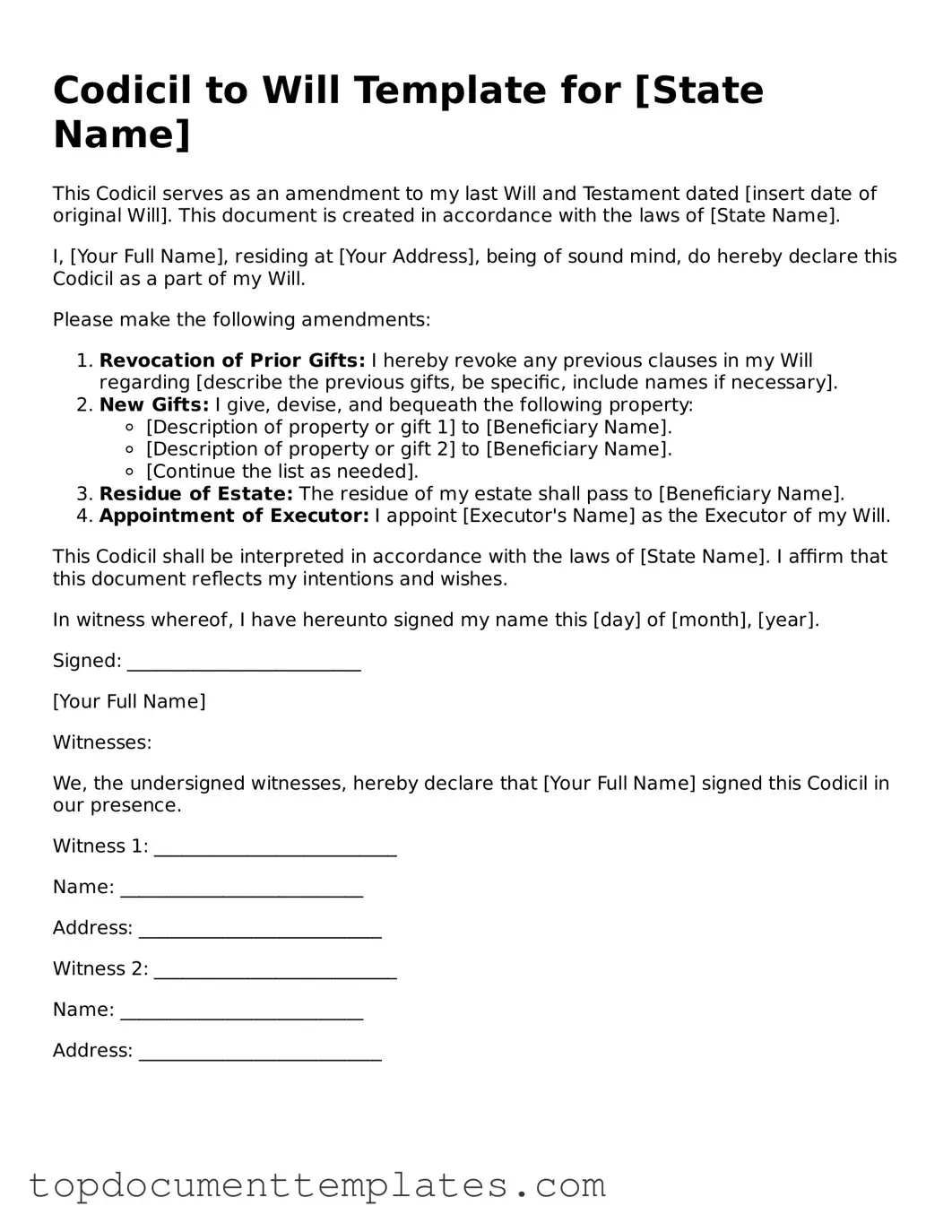A Codicil to Will form serves as an essential tool for individuals looking to make amendments to their existing wills without the need to draft an entirely new document. This form allows for specific changes, such as updating beneficiaries, altering the distribution of assets, or appointing new executors. By utilizing a codicil, individuals can maintain the original intent of their will while ensuring that it reflects their current wishes and circumstances. It is important to note that a codicil must be executed with the same formalities as a will, which typically includes signing in the presence of witnesses. Additionally, clarity and specificity are crucial; vague language can lead to confusion or disputes among heirs. Understanding the structure and requirements of a codicil is vital for anyone considering adjustments to their estate planning documents. Properly executed, a codicil can streamline the process of updating a will, providing peace of mind and ensuring that one's legacy is preserved according to their most recent intentions.
